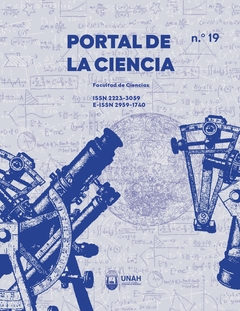Florivory and related floral attributes in species of the university campus of the Universidad Nacional Autónoma de Honduras
DOI:
https://doi.org/10.5377/pc.v1i19.18702Keywords:
flower damage, floral herbivory, antagonistic interactions, hemiptera, coleopteran, dermapteraAbstract
Florivory is defined as the consumption of sterile or reproductive floral structures (petals, sepals, stamens and ovaries) by organisms, mostly insects, playing an important role in plant reproduction, as it can reduce reproductive success. Florivory studies are essential to understand the interactions between herbivores and plants and how these interactions affect biodiversity and seed production. The frequency of florivory was recorded in 22 plant species belonging to 15 families that inhabit the Ciudad Universitaria campus of the National Autonomous University of Honduras. The family with the highest frequency of florivory was Asteraceae, and hermaphrodite and native plants. Likewise, three groups of florivorous insects were recorded: Hemiptera with a percentage of 68.18%, Coleoptera with 27.27% and Dermaptera with 4.54%. Flowers of arboreal species showed damage only by coleopterans, while damage by hemiptera was observed in shrubs and herbs. This study provides important information to understand this type of interactions such as florivory, little studied in the forests of Honduras.
Downloads
300
Downloads
Published
How to Cite
Issue
Section
License

This work is licensed under a Creative Commons Attribution-NonCommercial 4.0 International License.
© Revista Portal de la Ciencia
Los autores/as que publiquen en esta revista aceptan las siguientes condiciones:
De acuerdo con la legislación de derechos de autor, Revista Portal de la Ciencia, reconoce y respeta el derecho moral de los autores, así como la titularidad del derecho patrimonial, el cual será cedido a la revista para su difusión en acceso abierto en versión impresa y en formato digital. Al formar parte de múltiples indexadores, bases de datos y sistemas de referencia, los artículos que sean publicados por Revista Portal de la Ciencia se encontrarán visibles y serán descargados también de estos sitios web, indicando, en todos los casos, la autoría de los artículos, la fecha de publicación y el número de la revista al que corresponden.

Este obra está bajo una licencia de Creative Commons Reconocimiento-NoComercial 4.0 Internacional.
Usted está en libertad de:
- Compartir: copiar y redistribuir el material en cualquier medio o formato
- Adaptar: remezclar, transformar y crear a partir del material
Bajo las siguientes condiciones:
- Reconocimiento: Usted debe darle crédito a esta obra de manera adecuada, proporcionando un enlace a la licencia, e indicando si se han realizado cambios. Puede hacerlo en cualquier forma razonable, pero no de forma tal que sugiera que usted o su uso tienen el apoyo del licenciante.
- Uso no comercial: Usted no puede hacer uso del material con fines comerciales.




